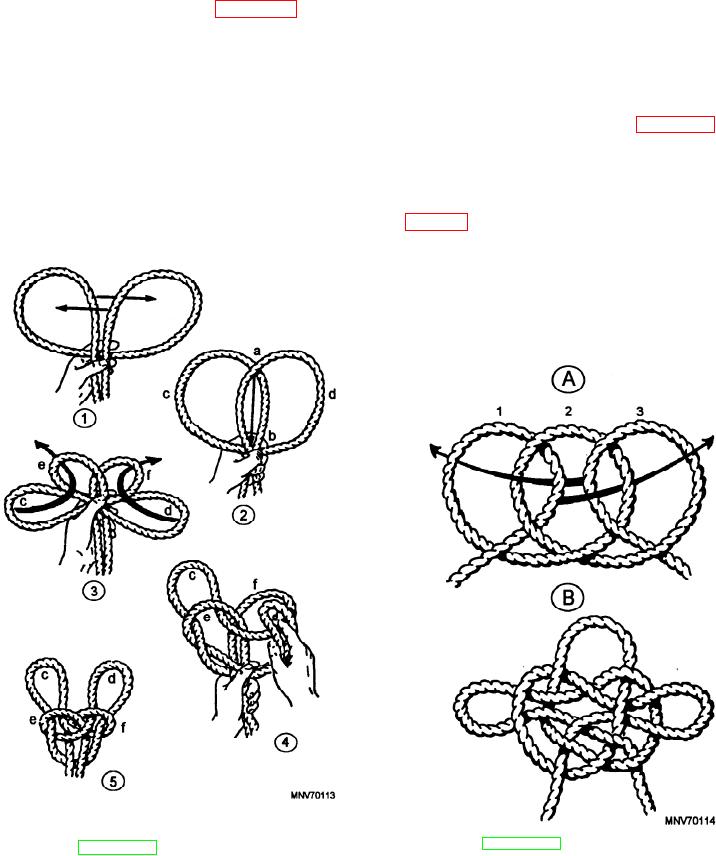
Spanish Bowline
catches on a projection and the hoisting cannot be
stopped in time, injury to the person seated is almost
The Spanish bowline can be used whenever it is
inevitable. Use enough personnel for the job, but no
desirable to have two eyes in the line. Its primary use,
more.
however, is as a substitute for the boatswains chair.
Many prefer it to the French bowline because the bights
Masthead Knot
are set and will not slip back and forth when the weight
The masthead knot is seen usually in fancy work,
is shifted.
but it also has a practical purpose. In the days of sailing
To tie this knot, take a bight and bend it back away
ships, masthead knots were set at the top of the masts,
from you, as shown in view 1 of figure 4-17, forming
and the stays and shrouds were secured to the eyes of the
two bights. Then lap one bight over the other, as shown
knots. It is a good knot to remember if you ever have to
in view 2. Next, grasp the two bights where they cross
rig a jury mast.
(point a in view 2), and fold this part down toward you,
In tying the masthead knot, fast lay up three
forming four bights, as shown in view 3. Next, pass
underhand bights, the second on the first, and the third
bight c through bight e and bight d through bight f (view
on the second, as shown in view A of figure 4-18. Then
4). See the complete knot in view 5.
thread the inboard parts of the outboard bights under
A word of caution here: ALWAYS use manpower
and over the parts of the other two bights, working each
to hoist a person in a boatswain's chair (or any
to the outside. Pull both bights tight. Work the slack
substitute). Otherwise, if the chair or a part of the knot
into the knot to equalize the size of the three eyes (view
B, fig. 4-18). Splice the two ends together and you have
four eyes to which you can secure stays and shrouds.
Rolling Hitch
The rolling hitch is one of the most useful and most
important hitches used on deck. It can be used for
Figure 4-18.--Masthead knot.
Figure 4-17.--Spanish bowline.
4-17

